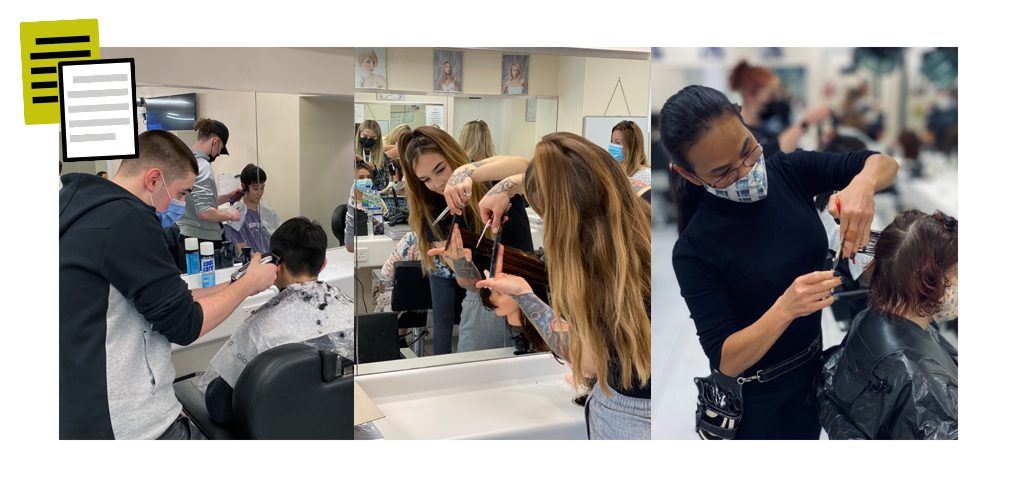
Five Things You Need To Know About Apprenticeships
With National Apprentice Week right around the corner (7-13 February) we figured there was no better time to share some insight into what you need to know about hairdressing and barbering apprenticeships and why hiring an apprentice could be valuable for your business.
The conversation surrounding the topic of apprenticeships amongst those in the industry can be mixed, but with ongoing recruitment and retention issues, hiring an apprentice in your salon could be a key way to ensure loyalty and allegiance to your business – preventing frequent staff turnovers. Plus, importantly, training a hairdressing apprentice can be more cost-effective than hiring pre-skilled staff.
Taking on an apprentice can also be your chance to shape the future of hairdressing – ensuring the next generation of hairdressers are trained properly and have the skills needed to take the industry to new levels.
Edward Hemmings, Director of Education at Alan d Hairdressing Education and Salon Employer Association (SEA) founder is a key advocate for the importance of hairdressing and barbering apprenticeships.
“Apprenticeships are a great way of growing your business from within; breeding loyalty and skills tailored to your own requirements” – Edward Hemmings, Alan d Hairdressing Education
Let Edward share the top five facts he thinks you should know when taking on an apprentice…

FIVE THINGS YOU NEED TO KNOW
1) You can employ an apprentice at any age
“The government has recognised that not everyone makes the right career move at 16 and has changed the rules. You can employ an apprentice of any age. In year one, all apprentices must be paid at least the government stipulated wage – currently £4.30 per hour – regardless of age. Into year 2 it gets more complicated, but if they’re under 19 the same wage applies, otherwise it’s the minimum wage for their age. In our experience older apprentices tend to learn quicker than school leavers, but you need to consider age implications”
2) Those undertaking hairdressing and barbering apprenticeships must be employed for a minimum of 30 hours per week
“This is very important as the hours need to be documented in a contract of employment and the apprentice must be paid appropriately”
3) 20% of the time they must be in ‘off-the-job training’
“This includes all learning and tasks over and above that of the basics required to work in the salon. Manufacturer training will count as well as other training connected to their salon work, but not part of it. This might include barista training, for example”
4) You might be entitled to an incentive for employing an apprentice
“There are a number of incentives to help with the employing of an apprentice. The basic grant starts at £1000, but these change regularly and have risen to up to £4000 over the last couple of years. There are also local grants too and these depend on the area in which your apprentice lives or your salon location”
5) Employers Digital Account
“In order to take on an apprentice and claim the grants (and in some cases help to find an apprentice), you will need to register for an Employer Account. Your training provider should be able to help with this, as it is to their advantage – they won’t get paid unless you have one set up”
REAL STORIES
Get inspired by hearing from the individuals that are living and experiencing the hairdressing and barbering apprenticeships journey, both the mentees and mentors…
LUCY HICKSON – THE BOUTIQUE ATELIER: CHESHIRE
The value of being offered a hairdressing apprenticeship…
CHARLOTTE ROBERTS – THE BOUTIQUE ATELIER: CHESHIRE
The importance and benefits of investing in an apprentice…
YAS HASSAN – JOE & CO: LONDON
Opportunities gained from barbering apprenticeships…
For more information on what you might need to know about hiring an apprentice, the following resources are recommended:
HM Government – www.apprenticeships.gov.uk
NHBF – www.nhbf.co.uk
THE INDUSTRY – www.the-industry.co.uk
